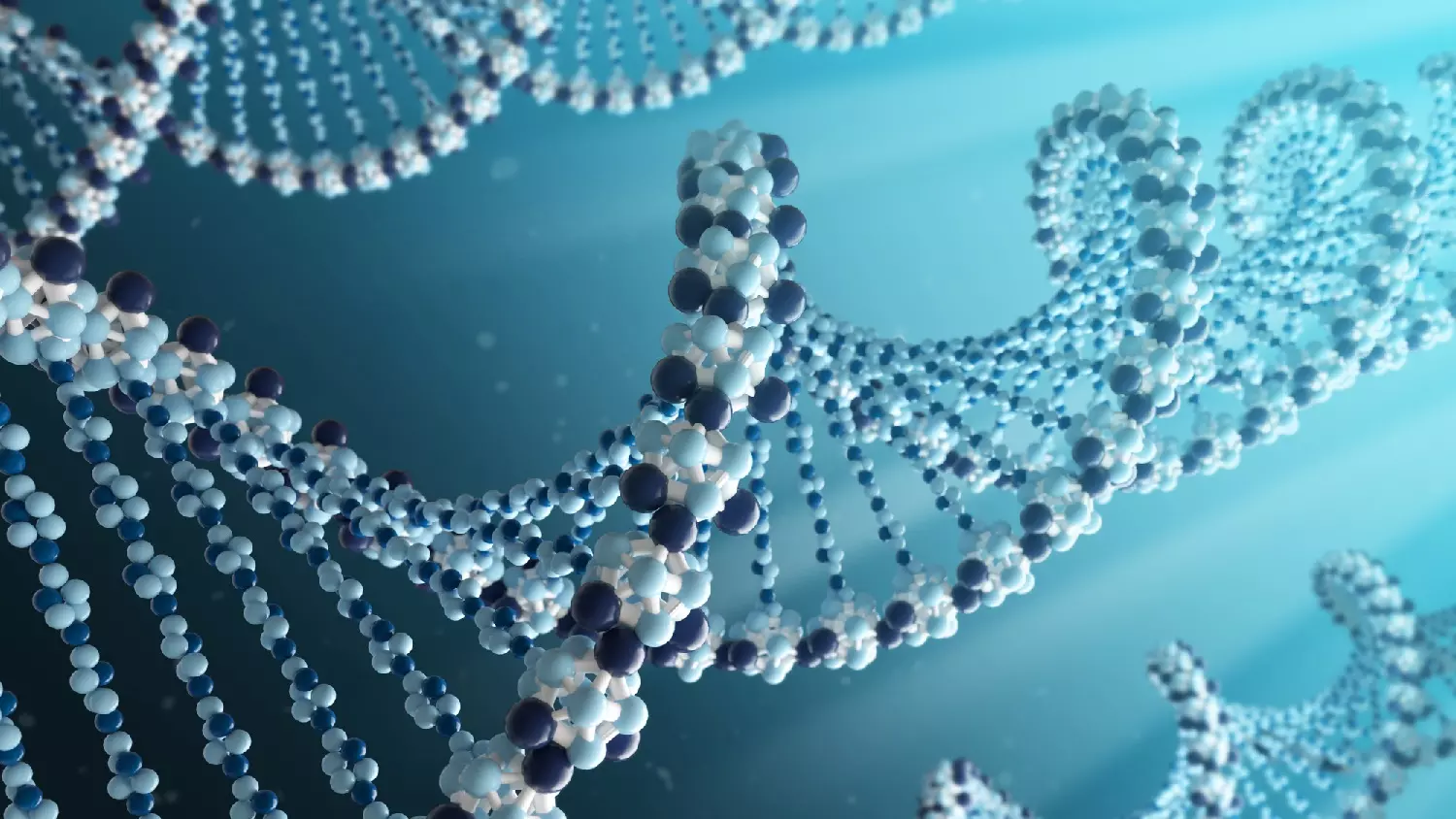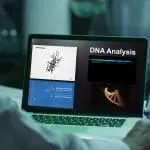[Originally published as Transposable Elements]
Transposable elements can have a wide range of effects on the genome of their host. Many TEs are regarded as deleterious, leading some to classify them as genomic parasites (Capy and Le Rouzic, 2005). However, there is also evidence that transposable elements are functional and therefore advantageous in the genome (Gage et al, 2007). Others have suggested that TEs are largely neutral (Manrubia et al, 2014). With such conflicting evidence, it is important to correctly evaluate the evidence to determine what transposable elements do and what their place in God’s creation is.
Transposable elements have been deemed deleterious for a long time. It has been speculated that TE proliferation leads to the extinction of asexual lineages (Arkhipova and Meselson, 2004). While other authors have speculated that newly arisen asexuals could avoid excessive TE accumulation (Dolgin and Charlesworth, 2006), this requires conditions that seem unlikely. There is, however, evidence from Drosophila melanogaster that lineages with more TEs are less fit (Pasyukova et al, 2004). Furano et al (2001) suggested that certain LINE-1 elements in the human genome were deleterious as well.
While there is some evidence for TEs being deleterious, all of the aforementioned papers indicating TEs being deleterious are slightly older. While certainly not out of date, genetics is advancing at such a rapid pace that even papers published since the beginning of this century may be less useful. Recent discoveries have made the case for TEs being advantageous. While various functions had been assigned to TEs previously (for example Jordan et al, 2003), the last decade has been rife with newly discovered advantageous functions for TEs, as well as additional evidence for previously proposed functions.
Transposable elements are increasingly linked with stress response in both plants and animals. The common model plant Arabidopsis had DNA demethylase targeting transposable elements to cause them to produce RNA to regulate stress response (Wang et al, 2014). Transposable elements were also implicated in response to excessive iron in rice (Picault et al, 2015). The same is true of maize where up to nine TE families are specifically involved in mediating stress responses (Springer et al, 2015). In maize, rice and Arabidopsis TEs are implicated in the production of a type of RNA linked to stress resistance (Zhu et al, 2017). Clearly, in at least a few plants, some TEs are advantageous and important to the organism’s response to stress.
Though seemingly less studied in other organisms than in plants, transposable elements do appear to have an important role there as well. For example, a fungal parasite of rice, and other plants uses TEs to reorganize whole sections of its genome in response to certain environmental changes (Chadha and Sharma, 2014). A study in Drosophila melanogaster confirmed that at least one TE was active in stress response, and suggested several others could be as well (Gonzalez et al, 2014). A more recent, and well-documented study of Drosophila genomes revealed that eighty-four TE sites were likely under selection, and at least twenty-one TEs are involved in adaptation (Gonzalez et al, 2019). As with plants, at least some of the TEs found in non-plants seem to carry a stress response function, making them advantageous to their hosts.
There is also clear evidence that some transposable elements are involved in the regulation of development. Bourque et al (2010) found that TEs had added new genes to the regulatory system of genes in human embryonic stem cells. In fact, TE-derived sequences make up almost all of a particular receptor type in embryonic stem cells (Glinsky, 2015). TEs have also been shown to be involved specifically in early embryo development regulation in mammals (Macfarlan et al, 2013). Being that development is one of the most carefully regulated aspects of life, the activity of TEs and TE-derived sequences during this crucial time seems to strongly indicate that they are providing an advantageous function, at least in this circumstance.
TEs are also involved in other organism’s regulatory networks. It has also been discovered that TEs are responsible for large portions of primates’ regulatory genetic elements (Bourque et al, 2013). This idea has been supported by independent research from other authors (Prabhakar et al, 2016). Mice have a specific TE family that code for enhancing factors for a part of the mouse brain (Bejerano et al, 2015). Many maize regulatory elements are either TE sequences or derived from TE sequences (Zhang et al, 2018). It seems TEs function as regulatory sequences across many types of organisms in the present, whatever their original effect on the genome.
While regulatory function and stress mediation are the most commonly cited functions in transposable elements, other functions have been proposed as well. It has been suggested that TEs provide the genetic variation necessary for an invasive species to adapt to its new environment (Stapley et al, 2015). It has been further speculated that TEs that incorporate tandem repeats may be multifunctional, though the authors admitted studies to support this concept were lacking (Plohl et al, 2015). In plants, TEs are known to produce numerous different types of RNA, which then perform a variety of functions above the aforementioned stress response and regulation of other genes (Cho, 2018). All this seems to point to TEs having a largely advantageous role in their hosts.
Evidence for the neutrality of transposable elements in the genome is much harder to find than evidence of TEs being deleterious or being functional. This could mean that neutrality is less common, but it could also mean it is much less interesting to write about. It has been suggested that a form of TE is selectively neutral in Caenorhabditis elegans (Dolgin et al, 2008). Manrubia et al (2014) found that bacterial genomes were characterized by a neutral relationship between the genome and the TEs present within it. Due to the success of neutral theory, it has also been suggested that TE’s must be viewed as neutral unless demonstrated otherwise (Arkhipova, 2018). Reliance on neutral theory drives Dopazo et al’s (2013) modeling and testing of TE dispersal as well.
With so much contrary evidence, determining which result is most likely is difficult. Neutral likely can be discarded from the start. While Arkhipova (2018) is correct that TEs should be viewed as neutral until demonstrated otherwise, the assumption of innocence does not equal innocence. Applying the analogy to TEs, just because it is unknown if a TE is advantageous, deleterious, or neutral does not mean it is neutral. It simply means we lack knowledge of that particular TE at this time. Most of the evidence for TE’s being neutral seems to rely on modeling from neutral theory (Dopazo et al, 2013). While there is some evidence associated with the models, the idea of neutral TEs seems to lack a strong supporting body of evidence. If neutral theory were to be discarded, most evidence for TE neutrality would collapse.
Deleterious TEs have stronger support. TEs seem to be involved in lowering fitness in Drosophila (Pasyukova et al, 2004) and human aging (Wood and Helfand, 2013). There is evidence that TEs can have negative effects, and this evidence needs to be considered.
Functional transposable elements seem to be the most supported by the weight of recent evidence. TEs involvement in regulation and stress response, in particular, has a sizeable body of evidence to support it. Therefore, transposable elements seem most likely to be advantageous This does not negate the existence of neutral or deleterious transposable elements. Indeed, such results may well be expected when dealing with a mobile element. However, based on recent evidence, advantageous TEs seem most common.
From a creationist perspective, the above cited evidence make total sense. God designed TEs in the beginning to perform functional purposes. Since the fall, the genome has degraded to a point that some functional elements, including some TEs, no longer work correctly, or are even actively bad for the genome. This in no way refutes the original design; it merely points to the original design having been damaged in some way. TEs are wonderful evidence of God’s built in design for creation.
Do you know what’s going to happen when you die? Are you completely sure? If you aren’t, please read this or listen to this. You can know where you will spend eternity. If you have questions, please feel free to contact us, we’d love to talk to you.
References:
Arkhipova I.R. 2018. Neutral theory, transposable elements, and eukaryotic genome evolution. Mol Biol Evol. 35(6):1332-1337.
Arkhipova I. Meselson M. 2004. Deleterious transposable elements and the extinction of asexuals. Bioessays. 27(1):76-85.
Bejerano G. Nothwell J.H. Chung T. Heavner W. 2015. A family of transposable elements co-opted into developmental enhancers in the mouse neocortex. Nat Commun. 6(6644).
Bourque G. Kunarso G. Chia N.Y. Jeyakani J. Hwang C. Lu. X. Chan Y.S. Hg H.H. 2010. Transposable elements have rewired the core regulatory network of human embryonic stem cells. Nat Genet. 42:631-634.
Bourque G. Jeyakani J. Jacques P.E. 2013. The Majority of primate-specific regulatory sequences are derived from transposable elements. PLoS Genet.
Capy P. Le Rouzic A. The first steps of transposable elements invasion: parasitic strategy vs. genetic drift. Genetics. 169(2):1033-1043.
Chadha S. Sharma M. 2014. Transposable elements as stress adaptive capacitors induce genomic instability in fungal pathogen Magnaporthe oryzae. PLoS One.
Cho J. 2018. Transposon-derived non-coding RNAs and their function in plants. Front Plant Sci.
Dolgin E.S. Charlesworth B. 2006. The fate of transposable elements in asexual populations. Genetics. 174(2):817-827.
Dolgin E.S. Charlesworth B. Cutter A.D. 2008. Population frequencies of transposable elements in selfing and outcrossing Caenorhabditis nematodes. Genet Res. 90(4):317-329.
Dopazo H. Serra F. Becher V. 2013. Neutral theory predicts the relative abundance and diversity of genetic elements in a broad array of eukaryotic genomes. PLoS One.
Furano A.V. Boissinot S. Entezam A. 2001. Selection against deleterious LINE-1-containing loci in the human lineage. Mol Biol Evol. 18(6):926-935.
Gage F.H. Muotri A.R. Marchetto M.C.N. Coufal N.G. 2007. The necessary junk: new functions for transposable elements. Hum Mol Genet. 16(R2):R159-R167.
Glinsky G. Transposable elements and DNA methylation create in embryonic stem cells human-specific regulatory sequences associated with distal enhancers and noncoding RNAs. Genome Biol Evol. 7(6):1432-1454.
Gonzalez J. Guio L. Barron M.G. 2014. The transposable element Bari-Jheh mediates oxidative stress response in Drosophila. Mol Ecol. 23(8):2020-2030.
Gonzalez J. Petrov D.A. Rech G.E. Bogaerts-Marquez M. Merenciano M. Horvath V. Luyten I. Venkataram S. Quesneville H. et al. 2019. Stress response, behavior, and development are shaped by transposable element-induced mutations in Drosophila. PLoS Genet.
Jordan I.K. Rogozin I.B. Glazko G.V. Koonin E.V. 2003. Origin of a substantial fraction of human regulatory sequences from transposable elements. Trends Genet. 19(2):68-72.
Macfarlan T.S. Gifford W.D. Pfaff S.L. 2013. Transposable elements as genetic regulatory substrates in early development. Trends Cell Biol. 23(5):P218-226.
Manrubia S. Iranzo J. Gomez M.J. Lopez de Saro F.J. 2014. Large-scale genomic analysis suggests a neutral punctuated dynamics of transposable elements in bacterial genomes. PLoS Comput Biol.
Pasyukova E.G. Nuzhdin S.V. Morozova T.V. Mackay T.F.C. 2004. Accumulation of transposable elements in the genome of Drosophila melanogaster is associated with a decrease in fitness. J Hered. 95(4):284-290.
Picault N. Finatto T. Costa de Oliveira A. Chaparro C. da Maria L.C. Farias D.R. Woyann L.G. Mistura C.C. Soares-Bresolin A.P. Llauro C. et al. 2015. Abiotic stress and genome dynamics: specific genes and transposable elements response to iron excess in rice. Rice. 8(13).
Plohl M. Mestrovic N. Mravinac B. Pavlek M. Vojvoda-Zeljko T. Satovic E. 2015. Structural and functional liaisons between transposable elements and satellite DNAs. Chromosome Res. 23:583-596.
Prabhakar S. Rayan N.A. del Rosario R.C.H. 2016. Massive contribution of transposable elements to mammalian regulatory sequences. Semin Cell Dev Biol. 57:51-56.
Springer N.M. Makarevitch I. Waters A.J. West P.T. Sitzer M. Hirsch C.N. Ross-Ibarra J. 2015. Transposable elements contribute to activation of maize genes in response to abiotic stress. PLoS Genet.
Stapley J. Santure A.W. Dennis S.R. 2015. Transposable elements as agents of rapid adaptation may explain the genetic paradox of invasive species. Mol Ecol. 24(9):2241-2252.
Wang M.B. Le T.N. Schumann U. Smith N.A. Tiwari S. Au P.C. K. Zhu Q.H. Taylor J.M. Kazan K. Llewellyn D.J. et al. 2014. DNA demethylases target promoter transposable elements to positively regulate stress responsive genes in Arabidopsis. Genome Biol. 15(458).
Wood J.G. Helfand S.L. 2013. Chromatin structure and transposable elements in organismal aging. Front Genet.
Zhang W. Zhao H. Chen L. Wang L. Marand A.P. Wu Y. Jiang J. 2018. Proliferation of regulatory DNA elements derived from transposable elements in the maize genome. Plant Physiol. 176:2789-2803.
Zhu J.K. Wang D. Qu Z. Yang L. Zhang Q. Liu Z.H. Do T. Adelson D.L. Wang Z.Y. Searle I. 2017. Transposable elements (TEs) contribute to stress-related long intergenic noncoding RNAs in plants. Plant J. 90(1): 133-146.







